Jeanette Winterson [and others] in The Guardian:
 In my book of essays about life with AI – moving from Mary Shelley’s 1818 vision of a man-made humanoid to the possibilities of the metaverse – I describe AI not as artificial intelligence but alternative intelligence.
In my book of essays about life with AI – moving from Mary Shelley’s 1818 vision of a man-made humanoid to the possibilities of the metaverse – I describe AI not as artificial intelligence but alternative intelligence.
I am not thrilled with where Homo sapiens has landed us, and I believe we are at the point where we evolve or wipe out ourselves, and the planet. There is no reason to believe that the last 300,000 years mark us out as a species that is fully evolved. Our behaviour suggests the opposite. I would like to see a transhuman, eventually a post-human, future where intelligence and consciousness are no longer exclusively housed in a substrate made of meat. After all, that has been the promise of every world religion.
I was brought up in a strict religious household, and it intrigues me that for the first time since the Enlightenment, science and religion are asking the same question: is consciousness obliged to materiality? Religion has always said no. Scientific materialism has said yes. And now? It’s getting interesting.
More here.

 We have been through a radical shift in technology across just three generations of my family, and each step of the way has changed our lives dramatically, just as they did for society as a whole: allowing us to communicate with our loved ones, creating the world of instant news, changing the way we work, and altering the way we entertain and are entertained. But while a video call may seem a far cry from the telegram, all these forms of modern communication are based on the science of signals being sent from one distant point to another, almost instantaneously. And our ability to do that centers around magnets.
We have been through a radical shift in technology across just three generations of my family, and each step of the way has changed our lives dramatically, just as they did for society as a whole: allowing us to communicate with our loved ones, creating the world of instant news, changing the way we work, and altering the way we entertain and are entertained. But while a video call may seem a far cry from the telegram, all these forms of modern communication are based on the science of signals being sent from one distant point to another, almost instantaneously. And our ability to do that centers around magnets.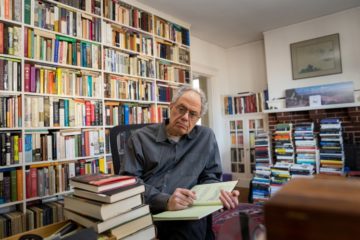 In an essay on the voluble New York intellectual Dwight Macdonald, George Scialabba cites Lionel Trilling’s assessment of Orwell, who, for Trilling, exemplified “the virtue of not being a genius, of fronting the world with nothing more than one’s simple, direct, undeceived intelligence, and a respect for the powers one does have, and the work one undertakes to do.”
In an essay on the voluble New York intellectual Dwight Macdonald, George Scialabba cites Lionel Trilling’s assessment of Orwell, who, for Trilling, exemplified “the virtue of not being a genius, of fronting the world with nothing more than one’s simple, direct, undeceived intelligence, and a respect for the powers one does have, and the work one undertakes to do.” Like printed books, perspective drawing, and double-entry bookkeeping, pockets were heralds of the modern era. In most times and places, people have either carried their money, combs, papers, and other small items in bags separate from their garments or tucked them into belts or sleeves. Integrated pockets are a product of European tailoring, which dates back only to the 14th century. They emerged when men’s breeches ballooned in the mid-1500s.
Like printed books, perspective drawing, and double-entry bookkeeping, pockets were heralds of the modern era. In most times and places, people have either carried their money, combs, papers, and other small items in bags separate from their garments or tucked them into belts or sleeves. Integrated pockets are a product of European tailoring, which dates back only to the 14th century. They emerged when men’s breeches ballooned in the mid-1500s.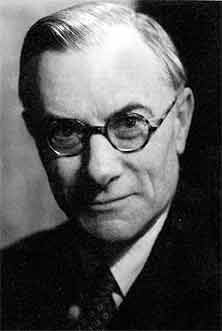
 T
T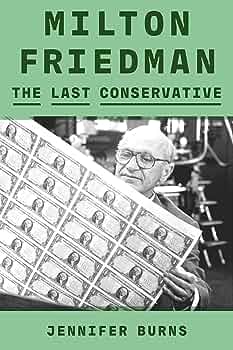 In writing her new biography of the Nobel Prize-winning economist Milton Friedman, known throughout his long life for his cheerful endorsement of deregulation and free markets, Jennifer Burns certainly had her work cut out for her. Reflecting on how controversial her subject was, she says that one of her goals was “to restore the fullness of Friedman’s thought to his public image.” She depicts Friedman, who
In writing her new biography of the Nobel Prize-winning economist Milton Friedman, known throughout his long life for his cheerful endorsement of deregulation and free markets, Jennifer Burns certainly had her work cut out for her. Reflecting on how controversial her subject was, she says that one of her goals was “to restore the fullness of Friedman’s thought to his public image.” She depicts Friedman, who 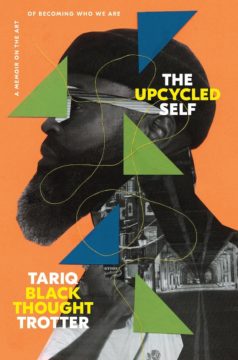 Across three decades as philosophical frontman for the Roots, Tariq Trotter (a.k.a. Black Thought) has composed such an expansive catalogue of keen social commentary and gritty introspection that his verse constitutes a biography in itself. With his memoir, “
Across three decades as philosophical frontman for the Roots, Tariq Trotter (a.k.a. Black Thought) has composed such an expansive catalogue of keen social commentary and gritty introspection that his verse constitutes a biography in itself. With his memoir, “ GRIEF, MEMORY, LOVE. I had not planned for this trinity of themes to become the substratum of my pilgrimage. Yet six months on, to arrive in Iraq in the nights leading up to Ashura — the climactic 10th day in a ritual period of mourning for the world’s more than 150 million Shiite Muslims — was to be confronted by a grief so fresh that the event that inspired it, the martyrdom of the Prophet Muhammad’s grandson Hussein in 680, might have occurred yesterday.
GRIEF, MEMORY, LOVE. I had not planned for this trinity of themes to become the substratum of my pilgrimage. Yet six months on, to arrive in Iraq in the nights leading up to Ashura — the climactic 10th day in a ritual period of mourning for the world’s more than 150 million Shiite Muslims — was to be confronted by a grief so fresh that the event that inspired it, the martyrdom of the Prophet Muhammad’s grandson Hussein in 680, might have occurred yesterday.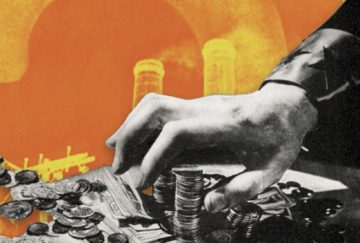 Americans of the left, right, and center are increasingly hostile to big corporations—but not for the same reasons. Many on the left are deeply uncomfortable with capitalism as such—that is to say, with corporate profit. In contrast, the populist right has turned against “woke” corporations that support transgender ideology, affirmative action, and other public policies conservatives oppose. But this is an objection not to corporate profit but to particular exercises of corporate power. Finally, as a response to US deindustrialization and the rise of China’s industrial and military power, there is growing bipartisan support for economic nationalism and industrial policy, particularly among national security experts in both parties. Here the criticism involves corporate purpose: Should American corporations, by investing or manufacturing in China, build up the economy of a country that is increasingly seen as America’s major rival in the world?
Americans of the left, right, and center are increasingly hostile to big corporations—but not for the same reasons. Many on the left are deeply uncomfortable with capitalism as such—that is to say, with corporate profit. In contrast, the populist right has turned against “woke” corporations that support transgender ideology, affirmative action, and other public policies conservatives oppose. But this is an objection not to corporate profit but to particular exercises of corporate power. Finally, as a response to US deindustrialization and the rise of China’s industrial and military power, there is growing bipartisan support for economic nationalism and industrial policy, particularly among national security experts in both parties. Here the criticism involves corporate purpose: Should American corporations, by investing or manufacturing in China, build up the economy of a country that is increasingly seen as America’s major rival in the world?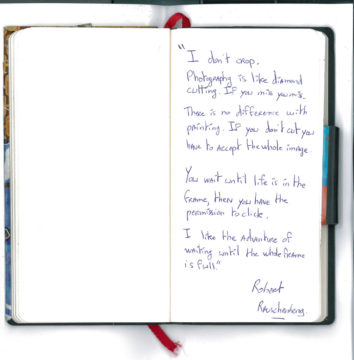 From 1965 to 1970, Robert Rauschenberg made the building his personal and professional HQ, a place to live, work, and (if the story be true) provide surplus shellfish to whomever asked. “I think the house satisfied a mix of aesthetic necessities and social desires for him,” says Kathy Halbreich, lately the executive director of and now an adviser to the Robert Rauschenberg Foundation. Since 1970, when the artist departed for roomier digs in Captiva, Florida, his eponymous organization has kept its offices in the building, remaining there even after Rauschenberg himself died in 2008 and well after bohemia had largely decamped from the neighborhood today known as NoHo. Tucked between a parking lot and the home of the New York University bursar, the five-story, redbrick, round-arch-style structure hides in plain sight, its anonymity somewhat abetted by the foundation’s low profile. “We’ve never really wanted to trumpet our location,” says Halbreich.
From 1965 to 1970, Robert Rauschenberg made the building his personal and professional HQ, a place to live, work, and (if the story be true) provide surplus shellfish to whomever asked. “I think the house satisfied a mix of aesthetic necessities and social desires for him,” says Kathy Halbreich, lately the executive director of and now an adviser to the Robert Rauschenberg Foundation. Since 1970, when the artist departed for roomier digs in Captiva, Florida, his eponymous organization has kept its offices in the building, remaining there even after Rauschenberg himself died in 2008 and well after bohemia had largely decamped from the neighborhood today known as NoHo. Tucked between a parking lot and the home of the New York University bursar, the five-story, redbrick, round-arch-style structure hides in plain sight, its anonymity somewhat abetted by the foundation’s low profile. “We’ve never really wanted to trumpet our location,” says Halbreich.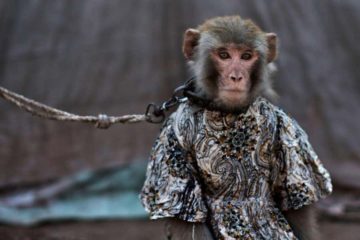 Monkeys that “dance” in street shows in Pakistan have high levels of stress hormones, abnormal behaviour and poor health – but stopping such shows would create a welfare crisis for trainers and their families, researchers say.
Monkeys that “dance” in street shows in Pakistan have high levels of stress hormones, abnormal behaviour and poor health – but stopping such shows would create a welfare crisis for trainers and their families, researchers say.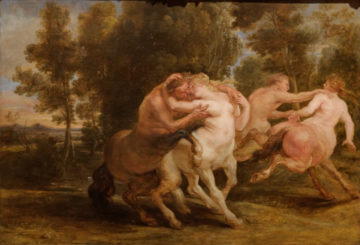 Peter Paul Rubens, known in his lifetime as “the prince of painters and the painter of princes”, is not, perhaps, a figure sympathetic to the modern age. He was by all accounts a charming man with graceful manners who could speak Latin, Dutch, Italian, Spanish, French and German; he was knighted by both Philip IV of Spain and Charles I of England; and employed as a diplomat and spy as well as a painter; he was a man as comfortable in Europe’s courts as in his studio. As such, he is just a tad too smooth when contemporary tastes run to artists with a bit of grit in the oyster.
Peter Paul Rubens, known in his lifetime as “the prince of painters and the painter of princes”, is not, perhaps, a figure sympathetic to the modern age. He was by all accounts a charming man with graceful manners who could speak Latin, Dutch, Italian, Spanish, French and German; he was knighted by both Philip IV of Spain and Charles I of England; and employed as a diplomat and spy as well as a painter; he was a man as comfortable in Europe’s courts as in his studio. As such, he is just a tad too smooth when contemporary tastes run to artists with a bit of grit in the oyster. For its first two-thirds, Walter Isaacson’s mammoth biography of Elon Musk is an epic romance, like The Lord of the Rings (a Musk favorite) or the Arthurian legends. It portrays the hero and his comrades overcoming seemingly insurmountable obstacles through daring, determination, cleverness, and skill, all in the pursuit of noble goals.
For its first two-thirds, Walter Isaacson’s mammoth biography of Elon Musk is an epic romance, like The Lord of the Rings (a Musk favorite) or the Arthurian legends. It portrays the hero and his comrades overcoming seemingly insurmountable obstacles through daring, determination, cleverness, and skill, all in the pursuit of noble goals.